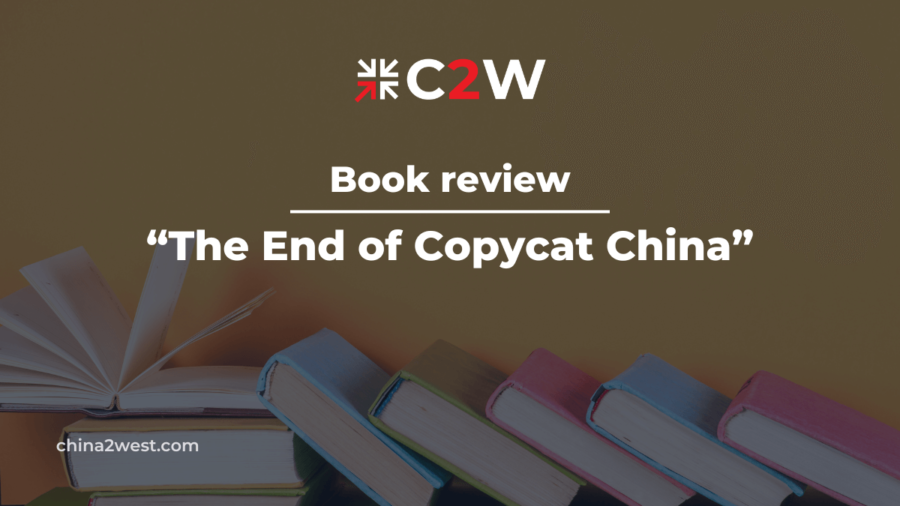After months of standoff, the United States President Joe Biden and the Speaker of the House, Kevin McCarthy, have finally struck a deal to lift the debt limit, seemingly on track to end the looming debt default.
That came after weeks of bipartisan negotiations, for which the POTUS even had to truncate his trip in Japan to deal with this pressing challenge at home.
It was the recent G7 summit held in Hiroshima, Japan, concluding with a joint statement by the seven wealthiest democracies in the world, as expected, on China.
At the heart of their joint statement was a resounding call to confront the substantial influence wielded by China, while also urging China to exert pressure on Russia to bring an end to the ongoing conflict in Ukraine.
The G7 nations also emphasized the urgent need to reduce dependency on China’s dominant position in the global supply chain, particularly in the manufacturing sector. This is crucial for countries that have outsourced their production to China.
The United States, in particular, has shown unwavering determination in rallying its allies against China and has made countering Chinese influence a top priority on the agenda, and President Biden himself has been actively involved in this mission.
But the stakes are incredibly high as the failure to reach a consensus between the Democrats and Republicans on raising the debt limit could potentially trigger a worldwide economic crisis.
Given the gravity of the situation, President Biden prioritized addressing this critical issue domestically.
Despite the agreement finally reached between the leaders of both parties, the passage of the deal is not guaranteed in the House where GOP holds a small majority. The Speaker will need to sell it to his party members for a breakthrough in the bipartisan stalemate that had hindered progress toward averting a default on the nation’s debt.
With all these political perils tangled up, how should businesses make of the situation?
First Off, What Should You Know About the US Debt Ceiling?
The US debt ceiling refers to the legal limit, set by Congress, on the total amount of debt that the United States government can accumulate to finance its operations.
In simple terms, it sets a cap on how much money the government can borrow to meet its financial obligations, such as paying bills, funding programs, and servicing existing debts.
Once the debt reaches the established limit, the government cannot borrow additional funds unless the debt ceiling is raised.
The need to raise the debt ceiling arises when the government’s spending exceeds its revenue, resulting in budget deficits. To bridge this gap and continue meeting financial obligations, the US Treasury must borrow money by issuing Treasury bonds, notes, and bills.
Raising the debt ceiling allows the government to keep borrowing and servicing its debts, avoiding a potential default.
The White House is actively seeking to raise the debt ceiling to prevent a default on the nation’s debt. Defaulting on the debt, which would be the first time ever in the history, would have serious consequences both domestically and globally.
Domestically, the United States would experience a decline in economic growth, resulting in the loss of 7.8 million American jobs.
Additionally, borrowing rates would increase, causing the unemployment rate to rise from the current 3.4% to 8%. Furthermore, a stock-market plunge would occur, leading to the erasure of $10 trillion in household wealth.
It would undermine the credibility of the United States in financial markets, lead to a downgrade in its credit rating, increase borrowing costs, and potentially trigger a worldwide financial crisis.
Despite the urgent need to address the debt ceiling, Democrats and Republicans have been unable to reach a consensus on the matter. The deadlock stems from fundamental disagreements over fiscal policies and priorities.
Democrats are advocating for what they call “clean” legislation regarding the debt ceiling. They are pushing for a straightforward increase in the debt ceiling without any additional conditions attached.
Their rationale is that once the debt ceiling issue is resolved, negotiations on spending and the budget can be carried out separately.
On the other hand, Republicans are not in favor of this approach.
They are insisting on including spending cuts and other provisions as part of any agreement to raise the debt ceiling. Republicans believe that addressing the debt ceiling should be an opportunity to implement measures that promote fiscal responsibility and reduce government spending.
The contrasting positions of Democrats and Republicans on fiscal matters, attributed to their ideological differences and the polarized nature and the divisive state of partisan politics, have created this impasse, making it challenging to find common ground on raising the debt ceiling.
As negotiations continue, finding a compromise that satisfies the priorities of both sides remains a considerable challenge, but there are still good signs of reaching an agreement.
How Is It Going to Impact the Global Supply Chain?
The concerns surrounding a potential debt default by the United States have sparked discussions about its wide-ranging impact on the global supply chain, particularly in major manufacturing hubs like China.
Disruptions to Economic Growth
A debt default by the United States would set off a global economic crisis and contraction of global economic growth by shattering the $24 trillion market for Treasury debt and thus freezing up financial markets. The ensuing uncertainty and financial turbulence would undermine investor confidence, impede business investments, and curtail consumer spending.
Consequently, there would be a decrease in the demand for goods and services, which would inevitably affect the global supply chain.
Diminished Role of the US Dollar & Trade Protectionism
The prices of oil and other commodities will undergo notable fluctuations, and it is likely that global inflation will resurge due to the loss of advantages associated with having a single global reserve currency, leading to widespread impact from the increased expenses of costlier trade.
Countries will endeavor to diminish their dependence on the US Dollars through various means, such as establishing new trade blocs that progressively isolate from one another as the global economy fragments.
Trust and confidence will plummet, and countries will throw up barriers like tariffs, quotas, and stricter rules, all aimed at making it harder for goods and services to move freely across borders.
Consequently, barriers to trade and disruptions in global supply chains will further complicate international trade, resulting in heightened difficulty and increased expenses.
Shifts in Supply and Demand Dynamics
Manufacturers worldwide would encounter difficulties in selling their products due to reduced demand, leading to excess inventory and declining revenues.
The interconnected nature of the supply chain means that disruptions in one region can swiftly spread to others, causing a ripple effect of decreased production and employment opportunities.
On the supply side, a debt default would also have severe repercussions.
Manufacturers heavily rely on raw materials, components, and intermediate goods sourced from various countries.
A default would disrupt trade flows, resulting in shortages of essential inputs, delayed deliveries, and increased costs. This, in turn, would strain supply chains and disrupt production schedules.
Shrinking Tech Investment and Restrictions on Tech Export
The default scenario poses a grave risk of financial instability and fosters a cautious approach towards risk, compelling businesses to prioritize cost-cutting measures and short-term survival rather than long-term innovation.
Consequently, the allocation of funds for research and development may shrink, restricting investments in groundbreaking technologies and the creation of novel products and services.
Moreover, as businesses grapple with financial constraints, collaborative efforts and knowledge-sharing initiatives within the tech industry may dwindle.
The resulting decrease in cooperation could impede progress and hinder the collaborative advancement of the sector.
In addition, this situation would amplify geopolitical tensions, particularly affecting the United States’ tech export policies, which may become increasingly stringent, particularly towards China.
As a result, the US government is likely to tighten export controls and intensify scrutiny on technology transfers to China and other nations perceived as potential adversaries.
Businesses relying on the import of advanced technologies from the United States to support their operations would encounter significant challenges in accessing cutting-edge components and equipment.
This disruption in supply chains would lead to delays in product development and undermine the competitiveness of various industries.
What Should Businesses Do to Take Precautions?
Amidst the imminent threat of an impending US debt default, it is imperative for businesses, particularly those engaged in outsourced manufacturing, to adopt precautionary measures in order to safeguard their supply chains and production lines.
Presented below are key considerations that businesses ought to bear in mind:
Diversify Supply Chain
In order to mitigate the risks associated with a US debt default, it is incumbent upon businesses to explore alternative sourcing options and diversify their supply chains.
By identifying and partnering with suppliers from diverse regions, such as rising manufacturing hubs like Southeast Asia and India, businesses can effectively distribute risk and ensure operational continuity even in the event of a global economic crisis triggered by a debt default.
Assess Financial Stability of Suppliers
Evaluating the financial stability of suppliers, particularly those based in countries with a heightened vulnerability to a US debt default, is a critical undertaking for businesses.
Conducting thorough financial due diligence and regularly assessing the fiscal health of suppliers can help identify potential risks, enabling businesses to make well-informed decisions regarding their partnerships.
Contractual Agreements and Contingency Planning
Businesses should meticulously review their contractual agreements with suppliers, particularly those situated in countries that are at risk of being affected by a US debt default.
By incorporating contingency clauses that address probable disruptions, force majeure situations, and financial contingencies, businesses can establish a framework for managing unforeseen events.
Collaborative efforts to develop contingency plans with suppliers can effectively mitigate the impact of supply chain disruptions and ensure the availability of alternative arrangements.
Supplier Relationship Management
Fostering robust relationships with suppliers assumes paramount importance during periods of uncertainty.
Sustaining open lines of communication and engaging in regular dialogue can equip businesses with the necessary awareness regarding potential challenges or risks that their suppliers may encounter.
Upholding transparency and nurturing collaboration with suppliers can facilitate proactive problem-solving and foster resilient partnerships capable of weathering economic shocks.
Risk Assessment and Scenario Planning
It is incumbent upon businesses to undertake comprehensive risk assessments and engage in scenario planning exercises to gauge the potential impact of a US debt default on their supply chains and production lines.
By identifying vulnerabilities, dependencies, and potential mitigating measures, businesses can devise proactive strategies to navigate through times of uncertainty.
Seeking guidance from risk management experts and industry associations can provide invaluable insights throughout this process.
“China Plus One” is the Way to Go
Despite the prevailing geopolitical tensions and uncertainties surrounding China, it remains an enticing option for businesses seeking production alternatives.
China’s well-established manufacturing capabilities, robust infrastructure, and extensive supply chain networks offer stability and operational efficiency.
While vigilantly monitoring geopolitical developments and adapting to evolving trade dynamics assumes significance, businesses can venture into partnerships and establish a formidable presence in China while simultaneously taking necessary precautions to safeguard their operations.
Many big names have adopted the “China Plus One” strategy for their supply chain, and that way you can mitigate risks and capitalize on the benefits of supply chain diversification.
Enhancing Resilience in Your Supply Chain Management with C2W
In this intricate landscape, the imminent specter of a US debt default looms ominously, posing a substantial challenge that carries the potential for widespread global repercussions.
In order to navigate this uncertain terrain, businesses are compelled to adopt proactive measures that meticulously safeguard their supply chains and production lines.
Among the array of compelling choices for supply chain diversification, C2W is a dominant player in this realm, with 18 years of experience in China and successful expansion into Southeast Asia and India.
Their skilled professionals understand both cultures and offer comprehensive solutions, optimizing supply chains and ensuring continuous operations. In uncertain times, businesses can thrive by taking proactive measures and relying on experts like C2W to navigate challenges and enhance resilience in the global supply chain. Contact us today!


